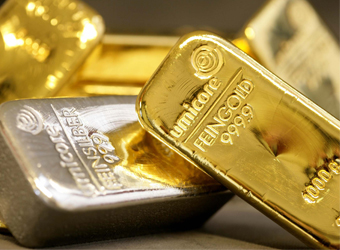Spot gold was down 0.1 percent at $1,351.48 an ounce as of 0111 GMT and U.S. gold futures fell 0.4 percent to $1,355 an ounce.
Gold on Wednesday rose to $1,365.23 per ounce, its highest since Jan. 25, buoyed by escalating tensions in Syria, U.S. sanctions on Russia and the U.S.-China trade spat.
U.S. President Donald Trump warned Russia on Wednesday of imminent military action in Syria over a suspected poison gas attack, declaring that missiles “will be coming” and lambasting Moscow for standing by Syrian President Bashar al-Assad.
Palladium has surged 6 percent this week on the back of concerns that supply from number one producer Russia could be hurt by sanctions imposed by the United States.
All of the Federal Reserve’s policymakers felt that the U.S. economy would firm further and that inflation would rise in the coming months, minutes of the central bank’s last policy meeting on March 20-21 released on Wednesday showed.
The U.S. Federal Reserve is worried about trade tensions with China, but newly released details on policymakers’ views suggest those concerns have not translated into concerns about the overall economy.
U.S. consumer prices fell for the first time in 10 months in March, weighed down by a decline in the cost of gasoline, but underlying inflation continued to firm amid rising prices for healthcare and rental accommodation.
The International Monetary Fund is optimistic on the outlook for global growth but warned darker clouds are looming due to fading fiscal stimulus and rising interest rates.
South African miner Gold Fields will complete preparatory work in 2019 at its Salares Norte project in northern Chile and is eyeing potential output of around 345,000 ounces of gold a year at the site by the early 2020s, a company executive said.
Mongolia’s anti-graft agency has arrested two former prime ministers as part of an investigation into suspected misuse of power by officials during two rounds of negotiations involving a big copper-gold mine, it said on Wednesday. Source: Reuters
Source: Reuters


